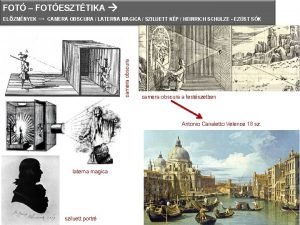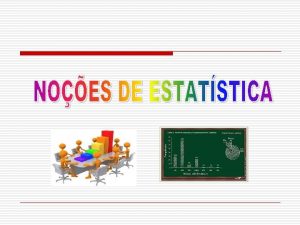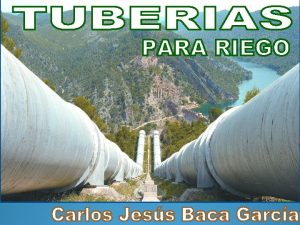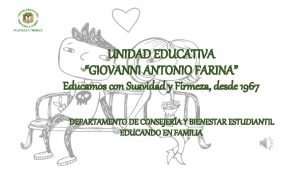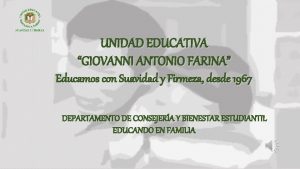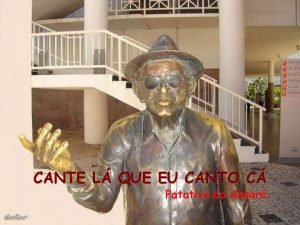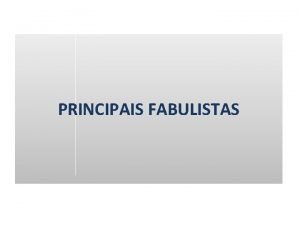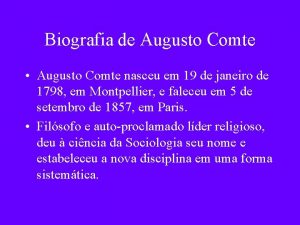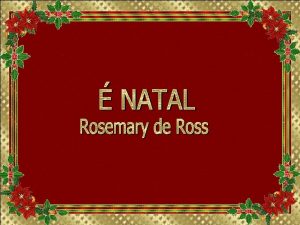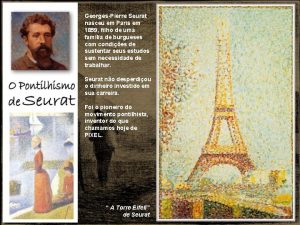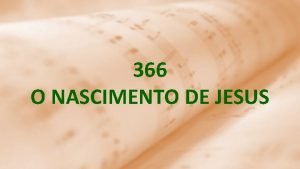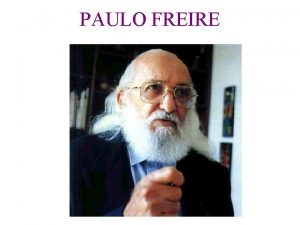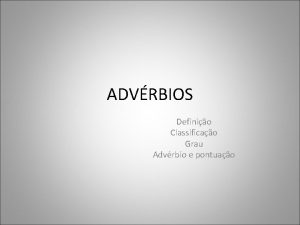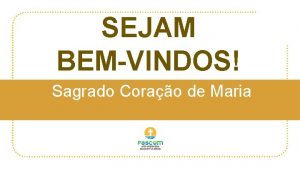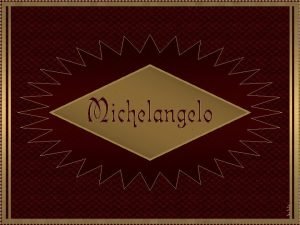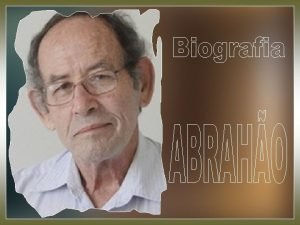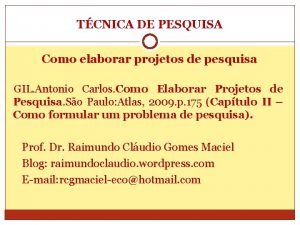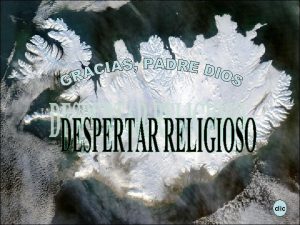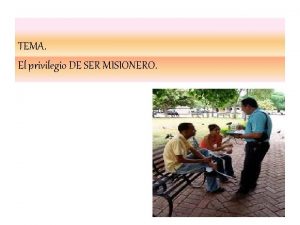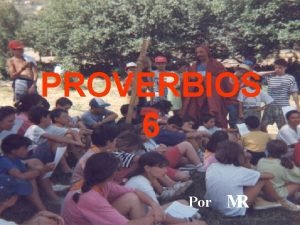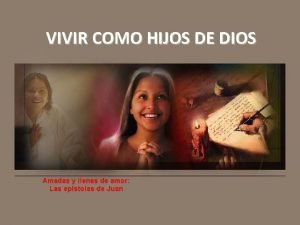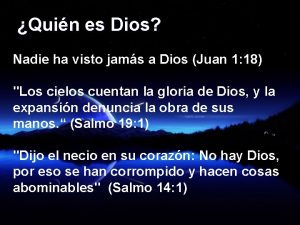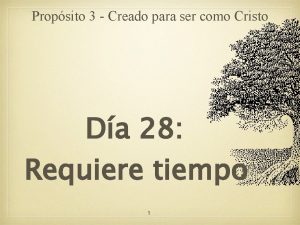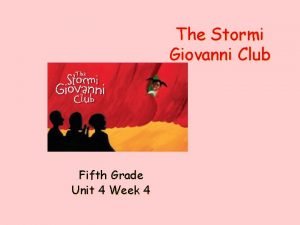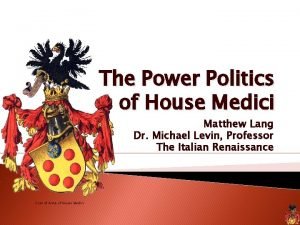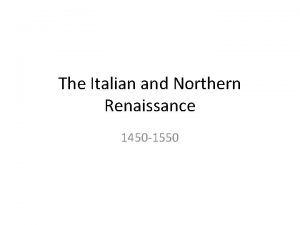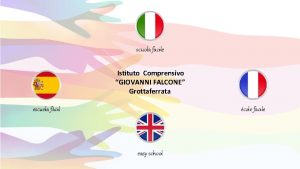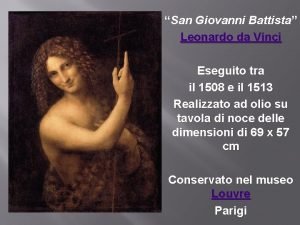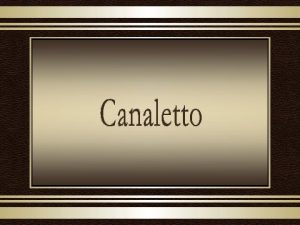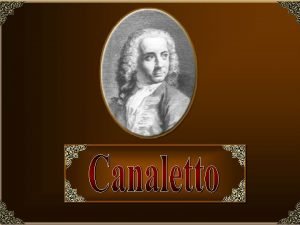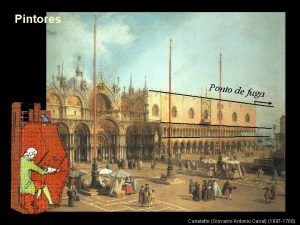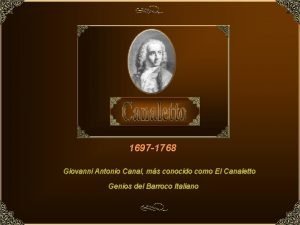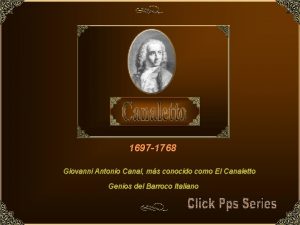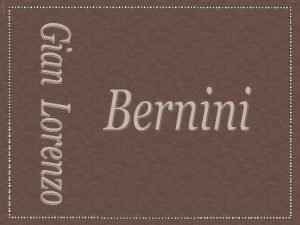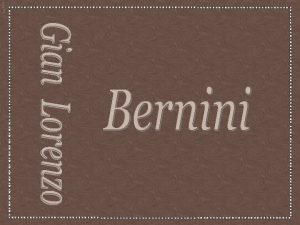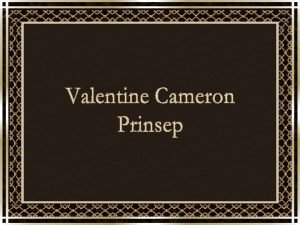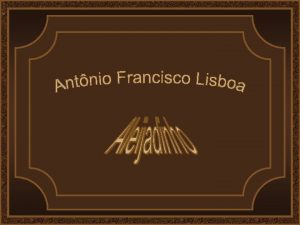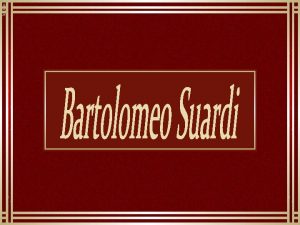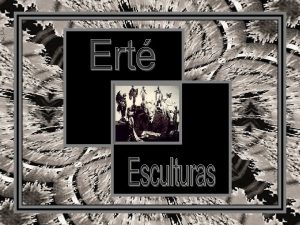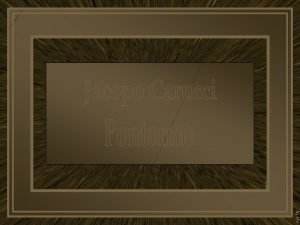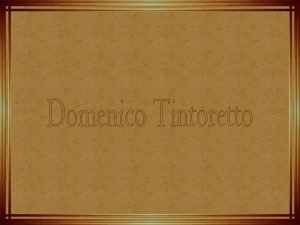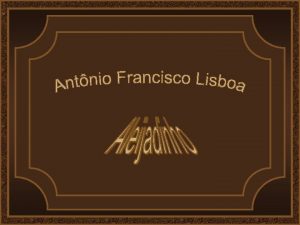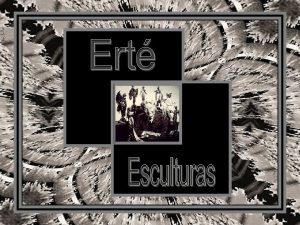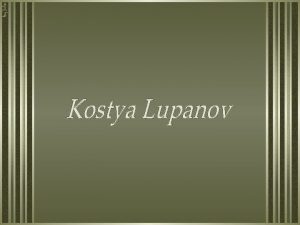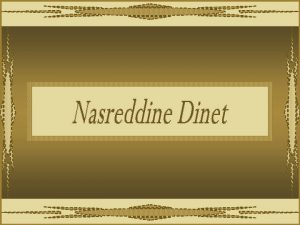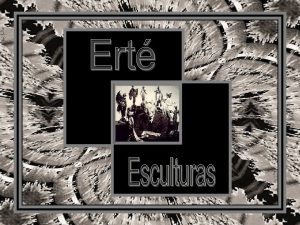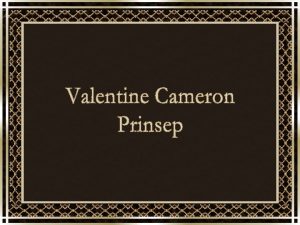Giovanni Antonio Canal conhecido como Canaletto nasceu em






























- Slides: 30


Giovanni Antonio Canal, conhecido como Canaletto, nasceu em Veneza em 7 de outubro de 1697. Foi um artista italiano famoso por retratar a atmosfera própria de Veneza sob o ângulo barroco, captando a visão de suas ruas e canais, envoltos em luzes e sombras. Ele também foi um importante gravador. Mudou-se para Roma em 1719 onde fez numerosos desenhos de ruínas e monumentos e diversos cenários para as óperas de Alexandre Scarlatti. Demonstrou um esplêndido tratamento das luzes e sombras e um perfeito domínio da perspectiva. Em 1730, passou a usar a câmara escura como base de suas obras, um instrumento óptico que permitia a passagem dos raios solares por uma lente e refletia a imagem que se queria pintar. Conseguiu assim mais precisão no desenho, mais luminosidade e um contraste mais brilhante entre as cores. Foi nessa época que iniciou os famosos “capricci”, composições formadas por elementos arquitetônicos reconhecíveis sobre um fundo imaginário. Em 1746 mudou-se para Londres e se dedicou a pintar paisagens inglesas. De volta a Veneza em 1763, Canaletto ingressou na Academia de Belas. Artes, da qual foi membro até sua morte em 19 de abril de 1768. Canaletto, 1754 di Antonio Visentini

Dolo on the Brenta, 1720 - Staatsgalerie, Stuttgart, Germany

Rio dei Mendicanti, 1723 - Ca’ Rezzonico, Italy

SS. Giovanni e Paolo e la Scuola di S. Marco, 1725 - Gemäldegalerie Alte Meister, Dresden

The Stonemason’s Yard, 1726 - National Gallery, London

The Reception of the French Ambassador Jacques-Vincent Languet, Comte Gergy de at the Doge’s Palace, Venice, 1727 Hermitage Museum, Russia

Piazza San Marco with the Basilica, Venice, 1730 Fogg Museum, Cambridge, Massachusetts

Riva degli Schiavoni, 1730 - Sir John Soane’s Museum, London

The Grand Canal and the Church of the Salute, 1730 - Museum of Fine Arts, Houston, USA

View of the Entrance to the Venetian Arsenal, 1732 - Private Collection

Return of the Bucintoro to the Molo on Ascension Day, 1732 - Royal Collection, Windsor Castle, England

Fête de la Saint-Roch, 1735 - National Gallery, London

Venice - Grand Canal, 1738 - National Gallery, London

The Grand Canal in Venice from Palazzo. Flanginito Campo San Marcuola, 1738 - The J. Paul Getty Museum, Los Angeles

Capriccio Palladiano, 1740 - Galerie Nationale de Parme

The Portico with a Lantern, 1740 -44 - Art Gallery of South Australia

Harbor of San Marco, 1745 - Museu de Belas Artes de Boston

Westminster Bridge, with the Lord Mayor’s Procession on the Thames, 1747 - Yale Center for British Art, England

The Chapel of Eton College, 1747 - National Gallery, London

Whitehall et Privy Garden vue de Richmond House, 1747 - Private Collection

Le Château de Warwick, 1748 - Yale Center for British Art

L’Abbaye de Westminster avec la Procession de l’Ordre du Bain, 1749 - Abbaye de Westminster

Capriccio with Classical Ruins and Buildings, 1750 Accademia of Venice

The Strand front of Northumberland House, 1752

La Rotonde de Ranelagh, 1754 - National Gallery, London

Il Campo di Rialto, 1760 - Gemäldegalerieder Staatlichen. Museen, Berlin

Biography: Giovanni Antonio Canal, known as Canaletto, was born in Veneza, on October 7, 1697. He was an Italian artist famous for portraying the real Venetian atmosphere under the Baroque angle, capturing the vision of its streets and canals, wrapped in lights and shadows. He was also an important etcher. He moved to Rome in 1719 where he made numerous drawings of ruins and monuments and several sceneries for the operas of Alexandre Scarlatti. Canaletto demonstrated a superb handling of lights and shadows and a perfect mastery of perspective. In 1730, he began to use a camera as the basis of his works, an optical instrument that allowed the passageof sunlight through a lens and reflected the image that he wanted to paint. He succeded, thus, to draw more accurately, to achieve a brighter and more brilliant contrast between the colors. It was then that Canaletto began the famous “capricci”, compositions formed for recognizable architectural elements on an imaginary background. In 1746 he moved to London and devoted himself to paint English landscapes. Back to Venice in 1763, Canaletto joined the “Academy of Fine-Arts”, of which he was a member until his death on April 19, 1768. Perspective avec un Portique, 1765 - Accademia of Venice

Créditos Música: Sonata in A Alessandro Scarlatti, 1660 -1725 Pesquisa e Formatação: Julia Zappa juliazappa@uol. com. br Revisão e Tradução de Texto: Ida Aranha sabercultural@sabercultural. com http: //www. sabercultural. org Março 2014 Escalier des Géants, 1765 - Private Collection

Fontes: http: //www. canalettogallery. org/ http: //fr. wikipedia. org/wiki/Canaletto http: //pt. wikipedia. org/wiki/Canaletto http: //en. wikipedia. org/wiki/Canaletto http: //www. nationalgallery. org. uk/artists/canaletto http: //www. abcgallery. com/C/canaletto. html San Marco: the Crossing and North Transept, with Musicians Singing, 1766 -Kunsthalle, Germany
 Wojciech korfanty
Wojciech korfanty O gráfico de segmentos é também conhecido como:
O gráfico de segmentos é também conhecido como: Formula de blasius
Formula de blasius Giovanni antonio farina educamos
Giovanni antonio farina educamos Giovanni antonio farina biografia
Giovanni antonio farina biografia Dawiri
Dawiri Lasar segal nasceu
Lasar segal nasceu Poeta cantor de rua que na cidade nasceu
Poeta cantor de rua que na cidade nasceu Quando esopo nasceu
Quando esopo nasceu Biografia de auguste comte
Biografia de auguste comte Jesus nasceu para nos salvar
Jesus nasceu para nos salvar Nasceu em paris em 1859
Nasceu em paris em 1859 Em belem nasceu jesus nosso grande redentor
Em belem nasceu jesus nosso grande redentor Paulo freire nasceu
Paulo freire nasceu Paulo freire nasceu em recife em 1921
Paulo freire nasceu em recife em 1921 Na frase homem não chora o advérbio expressa negação
Na frase homem não chora o advérbio expressa negação Canto inicial
Canto inicial Michelangelo di lodovico buonarroti simoni
Michelangelo di lodovico buonarroti simoni Conhecido por uma cena
Conhecido por uma cena Gil, antonio carlos. como elaborar projetos de pesquisa.
Gil, antonio carlos. como elaborar projetos de pesquisa. Cómo te llamas tu nombre
Cómo te llamas tu nombre Tema misionero
Tema misionero Si no vives como piensas acabarás pensando como vives
Si no vives como piensas acabarás pensando como vives Vivir como hijos de dios
Vivir como hijos de dios Quien como dios nadie como dios
Quien como dios nadie como dios Como ser como cristo
Como ser como cristo The stormi giovanni club
The stormi giovanni club Giovanni de medici
Giovanni de medici Italian and northern renaissance
Italian and northern renaissance Icgfalcone grottaferrata
Icgfalcone grottaferrata San giovanni battista leonardo
San giovanni battista leonardo
